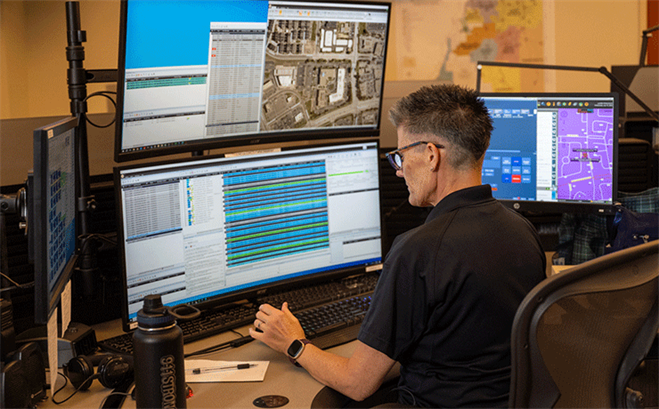Addressing Unmet Technology Needs in 911 Centers
November 28, 2023 by Kate Nadolski

To provide the fastest and most efficient response, 911 centers rely on technology to help collect mission-critical details from the caller and communicate these details to officers in the field.
In today’s world, resources for 911 centers can be few and far between. This deficit presents a potentially dangerous reality for first responders and community members calling in for help. Below, we’ll explore some of the most common unmet technology needs within 911 centers.
1. Outdated Computer Aided Dispatch (CAD) Systems
Many 911 centers across the nation have been using the same legacy system they’ve been on for decades. While the needs of dispatchers, officers, and the community grow, these outdated legacy systems are not providing the proper functionality needed to keep up with modern challenges. Modernizing these systems is essential for streamlining the dispatch process, reducing response times, and ensuring that crucial information is shared seamlessly between first responders.
2. Insufficient Data Collect and Integration
Data is a powerful asset for emergency response. However, many 911 centers struggle with insufficient data integration. This means that call takers often have limited access to critical information, such as real-time maps, building floor plans, and medical records. Addressing this technology gap by implementing a modern CAD system empowers emergency personnel with the tools they need to make informed decisions quickly, resulting in more effective responses and potentially saved lives.
3. Lack of Cybersecurity
No one is immune to cyberthreats, and the consequences of a cyberattack on these vital 911 centers could be catastrophic. Unfortunately, many 911 centers lack robust cybersecurity measures to protect against data breaches and disruptions. Developing and implementing comprehensive cybersecurity strategies or implementing technology that prioritizes the protection of data must be a top priority to ensure the integrity and availability of 911 services.
4. Limited Access to Next-Generation Communication
As technology evolves, so should the means by which people can reach 911. While voice calls remain the primary method of communication, there is a growing need for 911 centers to support Next-Generation 911 (NG-911), such as text messages, images, and videos. Providing these options would enable individuals with disabilities and those in situations where speaking may not be possible to access emergency services more easily.
5. Lack of Data Analytics and Predictive Analysis
To improve emergency response and resource allocation, 911 centers need access to advanced data analytics and predictive analysis tools. These technologies can help identify trends, hotspots, and emerging threats, enabling proactive responses and resource optimization. Investing in data-driven decision-making can enhance public safety outcomes.
6. Enhanced Caller Location Accuracy
Accurate caller location information is crucial for first responders to reach incidents quickly. While advancements in technology have improved location accuracy, there is still room for improvement, especially in areas with dense urban environments or in multistory buildings. 911 centers need access to more precise location data to reduce response times and improve overall safety.
When it comes to the importance of addressing the unmet technology needs within 911 centers, it’s not just about the matter of convenience, but instead about providing the best life-saving public safety services possible.
By modernizing call-handling systems, enhancing data integration, bolstering cybersecurity measures, and embracing next-generation communication methods, 911 centers are equipped to meet the evolving needs of communities.